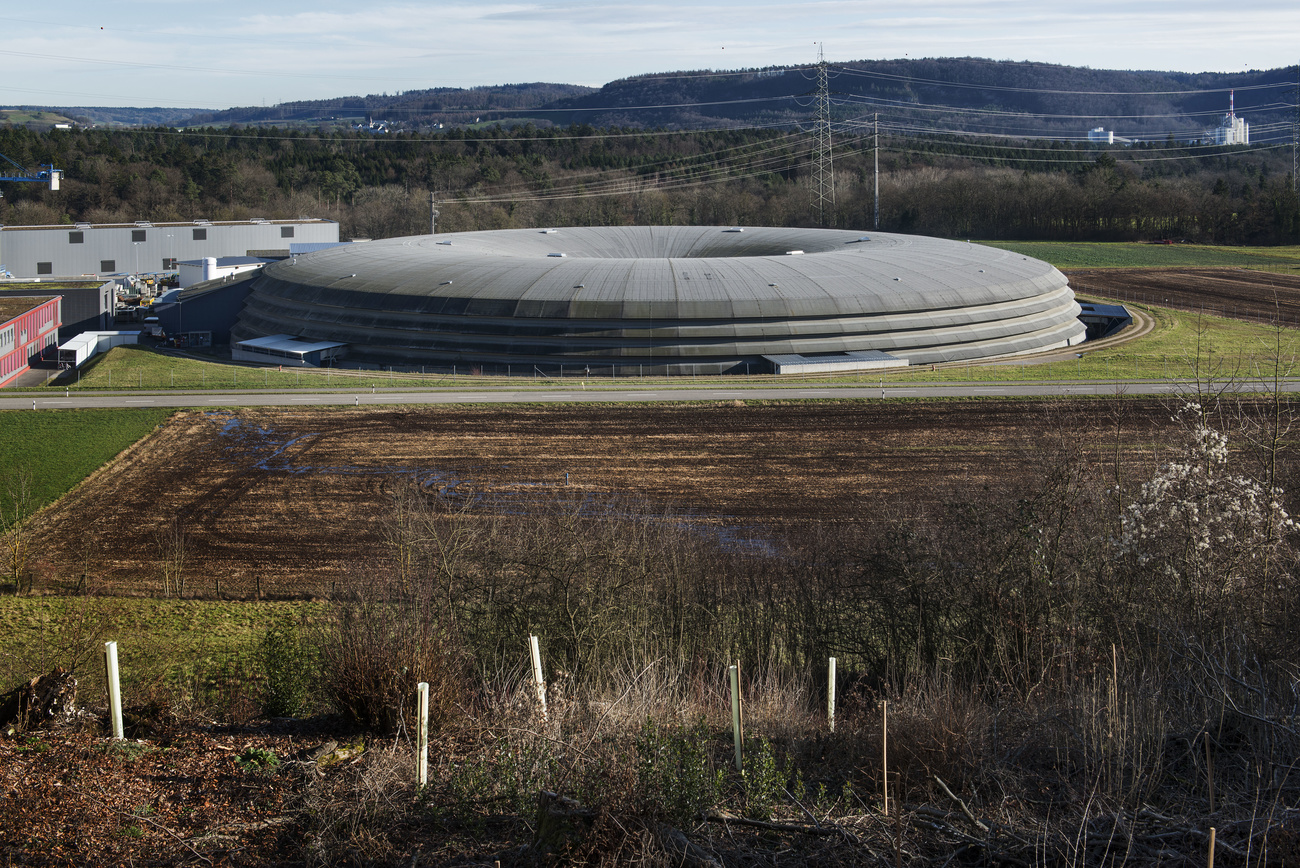New European space tech centre in Switzerland launches its first project

The European Space Deep-Tech Innovation Centre (ESDI), created in collaboration with the Paul Scherrer Institute (PSI), is to be located in the immediate vicinity of the PSI in northern Switzerland.
The European Space Agency and the PSI signed a contract to this effect at the end of October, the institute said in a press release on Monday. The official inauguration of the ESDI is scheduled for spring 2025.
+ Get the most important news from Switzerland in your inbox
The contract also defines the first platform of the ESDI: the Phi-Lab, attached to the PSI and responsible for creating instruments to promote innovation.
With the ESDI, the PSI becomes the only site in Switzerland where the space agency has a permanent presence. “This will enable this international organisation to be visible in the country, to be close to people and to network,” Johann Richard, director of the ESDI, is quoted as saying in the press release.
+ Switzerland to host European space technology centre
The ESDI will also act as an intermediary in the other direction: “We want to help implement developments from the Swiss high-tech and deep-tech sector for ESA space research, for the benefit of its member states, but perhaps also for other areas of industry”, Richard added.
Phi-Lab’s mission is to establish research programmes that encourage and financially support innovative projects in Switzerland. Formally, the ESDI is part of the European Space Agency, while Phi-Lab is integrated into the PSI.
Long history of collaboration
As a founding member of the ESA, Switzerland has been involved in the European space community from the outset, and collaboration between the ESA and the PSI has a long history. In particular, the Paul Scherrer Institute is a world leader in the development of detectors for use in space.
+ Why do two Swiss researchers want to find ice on comets?
For example, the ESA’s JUICE mission to the planet Jupiter and its moons was launched in April 2023. Also on board is the high-tech RADEM detector, developed at the PSI, which should provide information on the complex radiation conditions and highly dynamic magnetic environment of the Jupiter system.
In the fields of materials research, quantum physics and artificial intelligence, the PSI offers other anchor points for thematic fields of interest to the ESA.
Translated from French with DeepL/gw
This news story has been written and carefully fact-checked by an external editorial team. At SWI swissinfo.ch we select the most relevant news for an international audience and use automatic translation tools such as DeepL to translate it into English. Providing you with automatically translated news gives us the time to write more in-depth articles.
If you want to know more about how we work, have a look here, if you want to learn more about how we use technology, click here, and if you have feedback on this news story please write to english@swissinfo.ch.

In compliance with the JTI standards
More: SWI swissinfo.ch certified by the Journalism Trust Initiative


















You can find an overview of ongoing debates with our journalists here . Please join us!
If you want to start a conversation about a topic raised in this article or want to report factual errors, email us at english@swissinfo.ch.